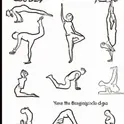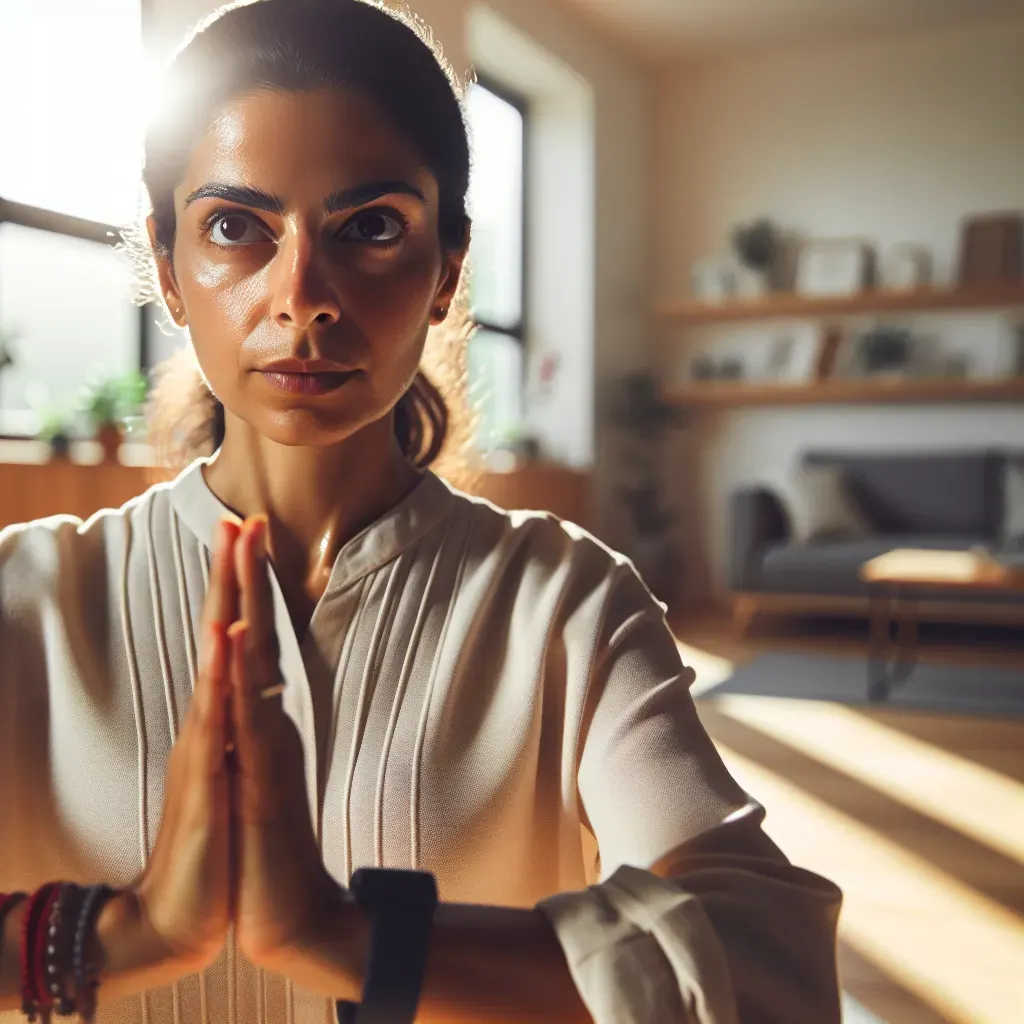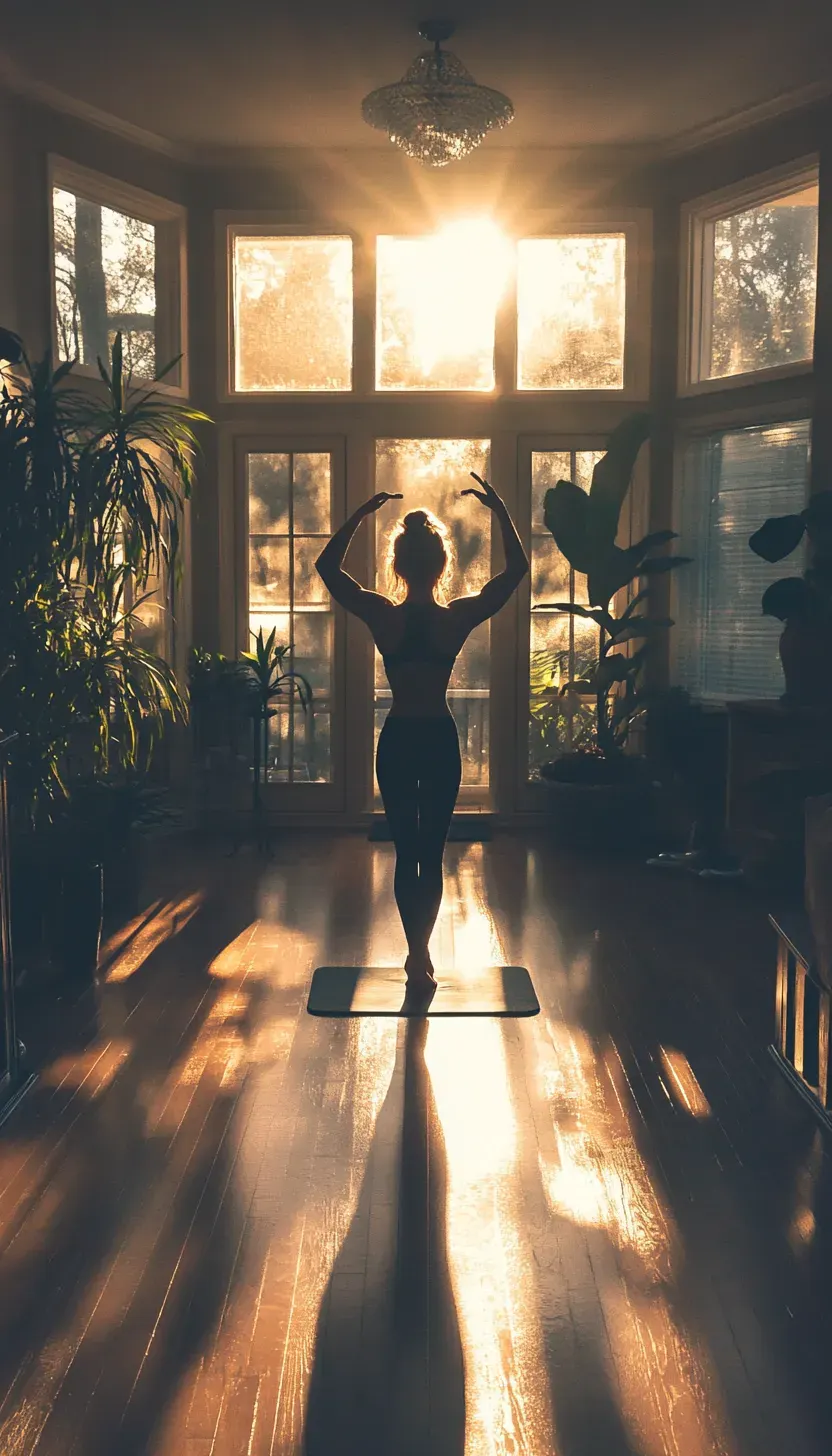5 Unexpected Ways Yoga Builds Upper Body Strength
Hey, fellow yogis and fitness enthusiasts! Ever felt like your upper body strength could use a little boost? Maybe you've been hitting the gym regularly, pumping iron like there's no tomorrow, but those gains aren't showing up where you want them to.
Trust me, I've been there too. It's frustrating, isn't it? You put in all that effort, yet your arms still feel floppy like a wet noodle.
But what if I told you that there's a whole world of untapped strength waiting for you on your yoga mat? Yeah, you heard me right.
Yoga isn't just about stretching and finding your zen – it's a powerhouse for building upper body strength in ways you never imagined.
You might be thinking, "Hold up, isn't yoga all about bending and twisting? How on earth is that going to help me get guns like Arnold Schwarzenegger?" I get it, it sounds counterintuitive.
But stick with me, because we're about to uncover five unexpected ways yoga can transform your upper body strength.
So, buckle up, buttercup. It's time to dive deep into the world of yoga and uncover the hidden treasures of muscle-building magic. Let's begin.
Mind-Body Connection
Yoga isn't just about striking poses and stretching muscles; it's a full-body experience that taps into the powerful connection between mind and body.
Picture this: you're in a yoga class, holding a Warrior II pose. Your instructor tells you to focus on your breath and the sensation of your feet grounding into the mat.
As you do, you start to feel a subtle shift in your body a deepening of the pose, a newfound strength in your arms. That's the mind-body connection at work.
In yoga, every movement is infused with intention and mindfulness. When you're flowing through sequences like Sun Salutations or holding challenging poses like Plank or Chaturanga, you're not just going through the motions you're actively engaging your mind to connect with your muscles.
This heightened awareness allows you to tap into muscles you didn't even know you had, leading to a more effective upper-body workout.
Take the example of the Downward-Facing Dog. On the surface, it might seem like a simple pose that mainly targets the hamstrings and calves.
But when you focus on engaging your arms and shoulders while pressing your palms into the mat, you'll feel a significant activation in your upper body all thanks to the power of the mind-body connection.
Stability And Balance
Stability and balance are like the unsung heroes of yoga practice. Sure, you might not think much about them when you're flowing gracefully from one pose to the next, but they play a crucial role in building upper body strength.
Think about it: when you're holding a balancing pose like Tree Pose or Warrior III, every muscle in your body has to work together to keep you steady.
But here's the kicker it's not just about standing on one leg and hoping for the best. Yoga poses that challenge stability and balance also require you to engage your core and activate muscles in your arms, shoulders, and chest to maintain proper alignment.
So, while you're busy trying not to wobble like a leaf in the wind, you're also sculpting a stronger, more resilient upper body.
Let's take a look at Crow Pose, for example. This arm balance requires a combination of strength, stability, and focus.
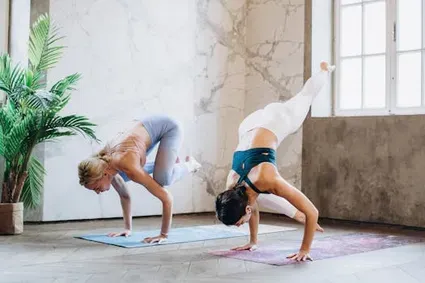
As you balance your knees on the backs of your arms and lift your feet off the ground, you're not only testing your core strength but also engaging your arms and shoulders to support your body weight. It's like a full-body workout disguised as a fun party trick.
Isometric Contractions
Now, let's talk about isometric contractions the secrets behind many yoga poses that can help supercharge your upper body strength.
Unlike traditional strength training exercises where you're lifting weights or performing dynamic movements, isometric contractions involve holding a position without changing the length of the muscle.
In yoga, poses like Plank, Side Plank, and Boat Pose are perfect examples of isometric contractions in action.
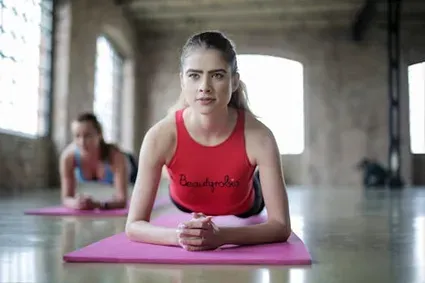
When you hold these poses for an extended period, you're not only building endurance but also engaging your muscles in a way that promotes strength and stability.
It's like hitting the pause button mid-movement and feeling the burn in all the right places.
Imagine you're in Plank Pose, for instance. As you brace your core and press into your palms, you're creating tension throughout your entire body, from your fingertips to your toes.
This sustained effort not only strengthens your arms and shoulders but also teaches your muscles to work together more efficiently, leading to greater overall strength.
Functional Movement Patterns
Yoga isn't just about looking good in leggings it's about moving with purpose and intention in every aspect of your life.
That's where functional movement patterns come into play. Unlike traditional gym exercises that isolate specific muscles, yoga focuses on dynamic movements that mimic real-life activities.
Think about it: when you're flowing through a Vinyasa sequence or transitioning from Downward-Facing Dog to Warrior I, you're not just going through the motions you're engaging multiple muscle groups simultaneously in a way that translates to real-world strength.
Let's say you're practicing Chair Pose. As you sink your hips back and reach your arms overhead, you're not only strengthening your quads and glutes but also engaging your arms and shoulders to maintain the pose.
It's like training your body to be strong and functional in everything you do, whether it's carrying groceries or playing with your kids.
Core Engagement
Ah, the core the powerhouse of the body. While you might think of six-pack abs and endless crunches when you hear the word "core," yoga takes a more holistic approach to core engagement.
It's not just about sculpting a chiselled midsection; it's about building a strong and stable foundation that supports your entire body including your upper body.
In yoga, almost every pose requires some degree of core engagement to maintain proper alignment and stability.
Whether you're flowing through a sequence of poses or holding a static posture, your core muscles are working overtime to keep you balanced and centred.
Take Boat Pose, for example. As you balance on your sitting bones and lift your legs and torso off the ground, you're not just targeting your abs you're also engaging your arms and shoulders to keep your chest lifted and your spine straight. It's like a full-body workout disguised as a simple seated pose.
Breath Control
Last but not least, let's talk about the power of breath control in yoga. You might think of breathing as just a basic bodily function, but in yoga, it's so much more than that.
Conscious breathing not only calms the mind and reduces stress but also enhances your physical practice including your upper body strength.

In yoga, every movement is synced with the breath, creating a seamless flow of energy throughout the body.
When you focus on deep, intentional breaths, you're able to access greater strength and stability in your poses, especially those that target the upper body.
Imagine you're in Upward-Facing Dog. As you inhale and lift your chest off the ground, you're not just passively arching your back you're actively engaging your arms and shoulders to support your weight.
And as you exhale and lower back down, you're releasing tension and allowing your muscles to relax. It's like riding the waves of your breath to new heights of strength and vitality.
Unlocking The Hidden Strength: The Power Of Yoga
So, here we are, at the end of our journey through the unexpected wonders of yoga for upper body strength. Now, I know what you might be thinking "Yoga for building muscles? Isn't that just for stretching and relaxation?"
Trust me, I get it. It's easy to underestimate the power of this ancient practice when you're used to hitting the gym and lifting heavy weights. But let me tell you, my friend, yoga is so much more than meets the eye.
You've learned how the mind-body connection in yoga can activate muscles you didn't even know you had, how stability and balance training can sculpt a stronger upper body, and how isometric contractions can supercharge your strength gains.
And let's not forget about functional movement patterns, core engagement, and the transformative power of breath control.
But here's the thing it's not just about getting ripped or looking good in a tank top. It's about feeling strong, confident, and empowered in your own body.
It's about tapping into your inner warrior and discovering what you're truly capable of on and off the mat.
So, the next time you roll out your yoga mat, remember this journey we've taken together. Embrace the unexpected, challenge yourself to try new things, and never underestimate the power of a downward-facing dog or a warrior pose.
Because when you open yourself up to the possibilities, the results can be truly astounding.
Now go ahead, stand up tall, roll your shoulders back, and take a deep breath. You've got this. And remember, the strength you're building on the mat today will carry you through whatever challenges life throws your way tomorrow.
So, here's to you to your strength, your resilience, and your unwavering commitment to becoming the best version of yourself. Keep shining, keep striving, and keep believing in the incredible power of yoga. Namaste.
People Also Asked
1. Q: Can yoga help build upper body strength?
A: Yes! Yoga incorporates various poses and movements that target the muscles in your arms, shoulders, and chest, leading to increased upper body strength over time.
2. Q: Do I need prior yoga experience to benefit from these upper body strength-building techniques?
A: Not necessarily. While some familiarity with yoga poses can be helpful, many of the techniques mentioned in the article are accessible to beginners and can be gradually incorporated into your practice.
3. Q: How often should I practice yoga to see results in my upper body strength?
A: Consistency is key. Aim to practice yoga at least a few times per week, gradually increasing the frequency as your strength and comfort with the poses improve.
4. Q: Can yoga help me tone my arms and shoulders without bulking up?
Yes! Yoga focuses on creating lean muscle mass and increasing strength without necessarily adding bulk, resulting in a toned and sculpted upper body.
5. Q: I have wrist or shoulder injuries. Can I still practice yoga for upper body strength?
A: It's important to consult with a healthcare professional or experienced yoga instructor to determine which poses are safe for your specific condition. Modifications and props can often be used to accommodate injuries.
6. Q: How long does it take to notice improvements in upper body strength through yoga?
A: Everyone's body responds differently, but with regular practice, you may start to notice improvements in strength and muscle tone within a few weeks to a couple of months.
7. Q: Can yoga alone be sufficient for developing significant upper body strength?
A: While yoga can certainly be a significant contributor to upper body strength development, combining it with other forms of exercise such as resistance training or bodyweight exercises can further enhance your results.
8. Q: Are there specific yoga poses that are particularly effective for building upper body strength?
A: Yes, poses like Downward-Facing Dog, Plank, Chaturanga, and Arm Balances such as Crow Pose and Side Plank are excellent for targeting and strengthening the muscles in your arms, shoulders, and chest.
9. Q: Will practising yoga for upper body strength make me more flexible as well?
A: Absolutely! Many yoga poses simultaneously improve flexibility and strength, leading to a more balanced and functional body overall.
10. Q: Can yoga help alleviate shoulder and neck tension caused by sedentary activities?
A: Yes, yoga can be very effective in relieving tension and stiffness in the shoulders and neck by incorporating gentle stretches and strengthening exercises targeted at these areas. Regular practice can help improve posture and reduce discomfort.
